
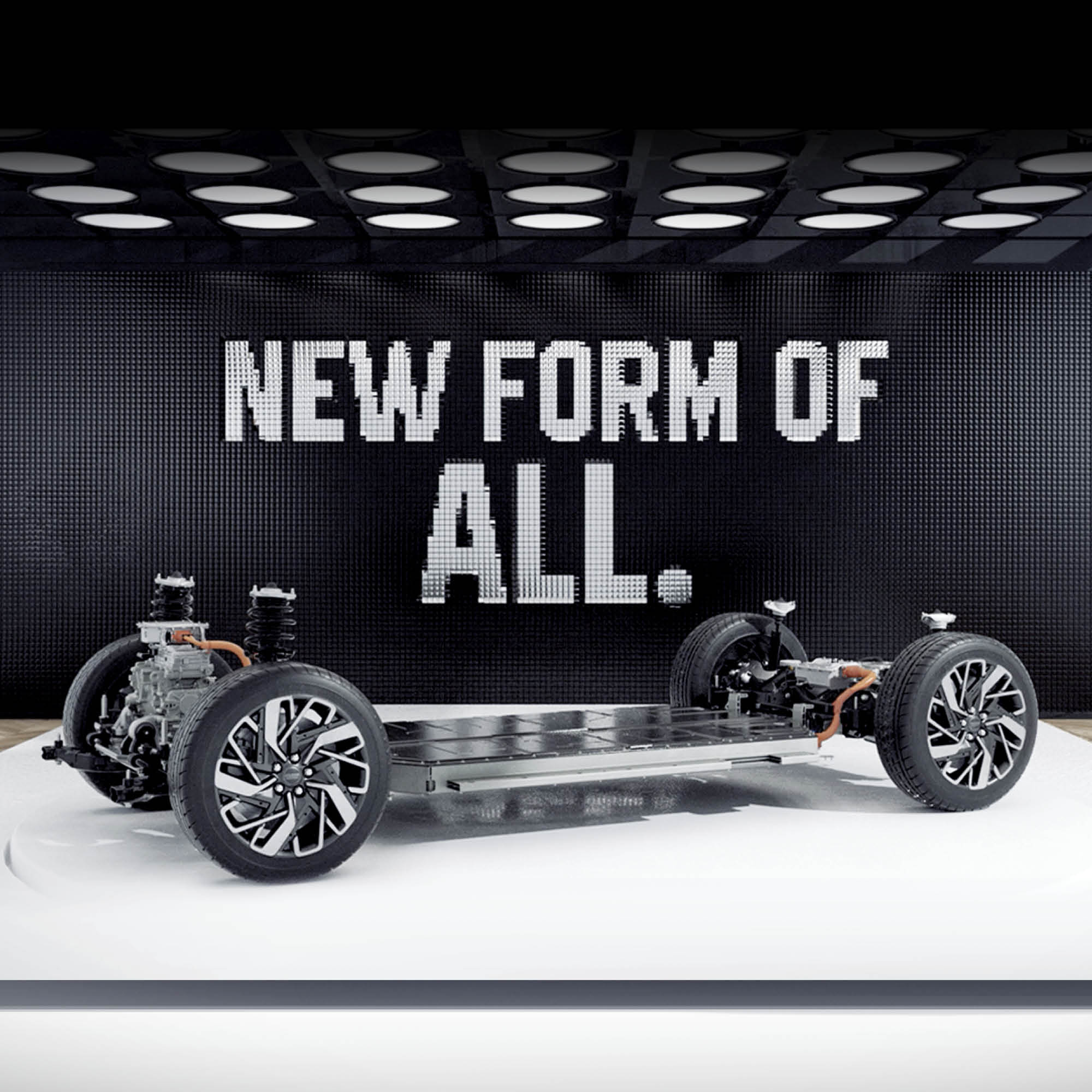


Hyundai Motor Group has unveiled the E-GMP (Electric-Global Modular Platform), the group’s first platform exclusively for BEVs. The development of this new platform has implications beyond a simple upgrade; it arguably marks a turning point in automotive history, as it serves as a definitive signal that the dominance of internal combustion engine vehicles (ICEVs) – the staple of the industry for over a century.
With drastic lifestyle changes and infrastructure development bringing the potential for massive shifts in consumer demand, the automotive industry of today is at a watershed moment. The E-GMP is Hyundai Motor Group’s response to the changing times, a culmination of the group’s renowned technological expertise and know-how in the BEV industry. The E-GMP massively improves the performance and efficiency of BEVs. Indeed, it may herald a new era of electric vehicles—as well as serving as a starting point for the new generation of Hyundai Motor Group BEVs.

Amidst the global warming triggered by industrialization, consumers are increasingly paying attention to sustainable development.
The reason why BEV-platforms have garnered so much attention of late is that consumers have become aware of the seriousness of climate change and global warming. Prevalent greenhouse gases, such as carbon dioxide, are responsible for the recent trend of rising global average temperatures. Carbon dioxide emissions have skyrocketed since the advent of the Industrial Revolution, and vehicles with internal combustion engine have taken a large share of the blame – particularly since the turn of the 21st century.
It is undeniable that a reduction of greenhouse gas emissions from automobiles is needed for sustainable development. In response, most major countries of the world have set strict emission standards, seeking to reduce the car’s impact on the environment. This is the context from which BEV-platforms have come to the fore: instead of borrowing from or adapting established platforms for ICEVs, it increasingly made more sense to expedite the inevitable development of dedicated BEV platform. The new BEV-platform is expected to speed up the process whereby a variety of new BEV lineups are designed and produced.
Doing so will in turn fulfill the needs of modern, environmentally-conscious consumers. Global warming and sustainability concerns are now a daily reminder—and many consumers have reacted by actively taking an “I-will-change-first” attitude. With the market for environmentally friendly cars growing year by year, most car manufacturers are now finding BEV development a strategic necessity, and not just an option, for future growth.
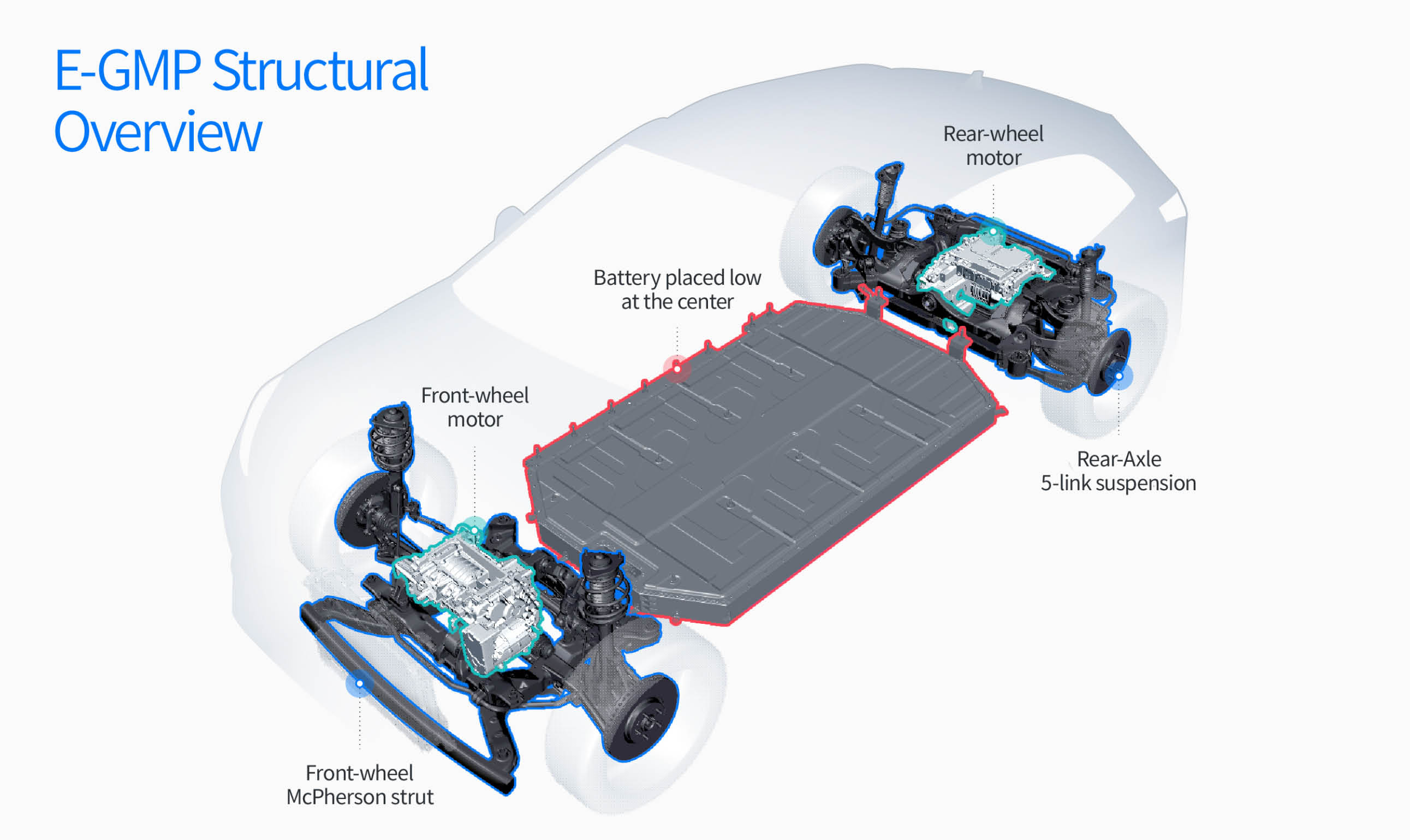
Thanks to unprecedented engineering freedoms, BEVs based on the E-GMP offer superior versatility in driving systems—and without compromising interior spaciousness.
The E-GMP is different from ICEV platforms in several aspects. The PE (Power Electric) System, which integrates the power motor, EV transmission, inverter, and battery, has been reduced in volume and improved in efficiency, thanks to a variety of cutting-edge technologies.
BEVs are powered by motors and batteries, so the engine and driveshaft needed for ICEVs are not necessary. For this reason, the E-GMP places a small motor (as opposed to a large engine) in what used to be the engine bay, and places the heaviest part of a BEV—the battery—across the center of the vehicle’s body where the driveshaft would be housed in an ICEV. The battery was reshaped into a flat, rectangular shape, with the height set at 130mm to minimize the volume. This composition significantly reduces the volume of the car’s front body, so BEVs with the E-GMP can possess a much shorter front overhang (the length between the front bumper and the center of the front axle) than those with ICEV platforms. And with the wheelbase (the length between the front and the rear axle) lengthening to accommodate the battery space, the designers have much more freedom to create innovative, spacious designs.
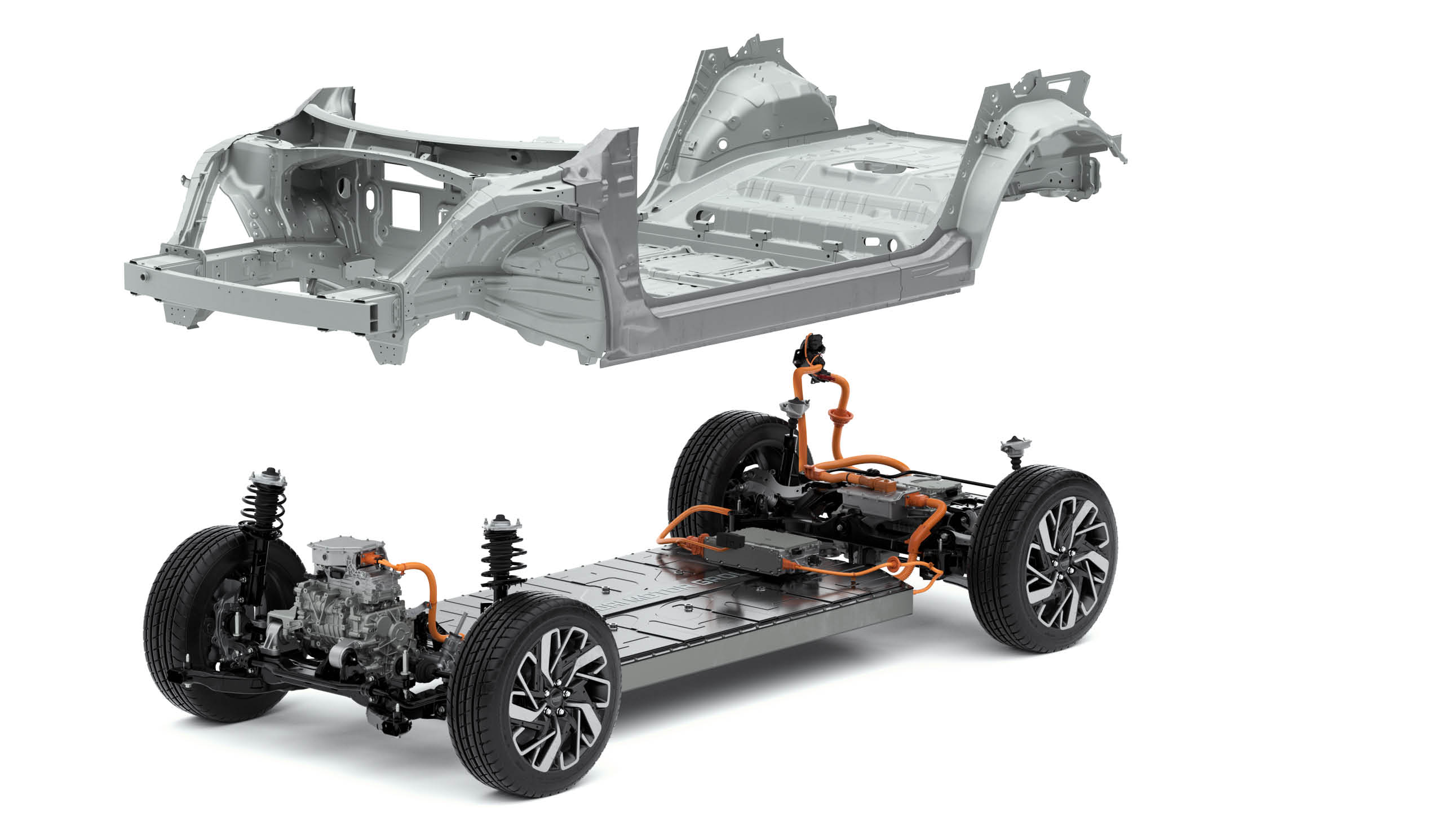
The E-GMP is compatible with both rear-wheel-drive (RWD) and four-wheel-drive (4WD), but it manages to avoid the protruding floor structure that characterizes RWD/4WD-compatible ICEV platforms. In typical ICEV platforms, realizing RWD or 4WD requires the installation of a driveshaft across the car floor that transports the power from the engine at the front to the rear wheels, which causes the protrusion. But BEVs do not require this driveshaft. The E-GMP accommodates the motor at the rear axle to realize RWD; likewise, it can simply add another motor to the front axle to realize 4WD, with the added freedom of being able to switch between RWD and 4WD.
Thanks to this unprecedented freedom, BEVs based on the E-GMP offer superior versatility in driving systems—without compromising interior spaciousness. This flexibility, in turn, can allow vehicle designers to pursue the so-called “Progressive Electrification Experience,”: more radical innovations for the driver’s and the passengers’ benefit.
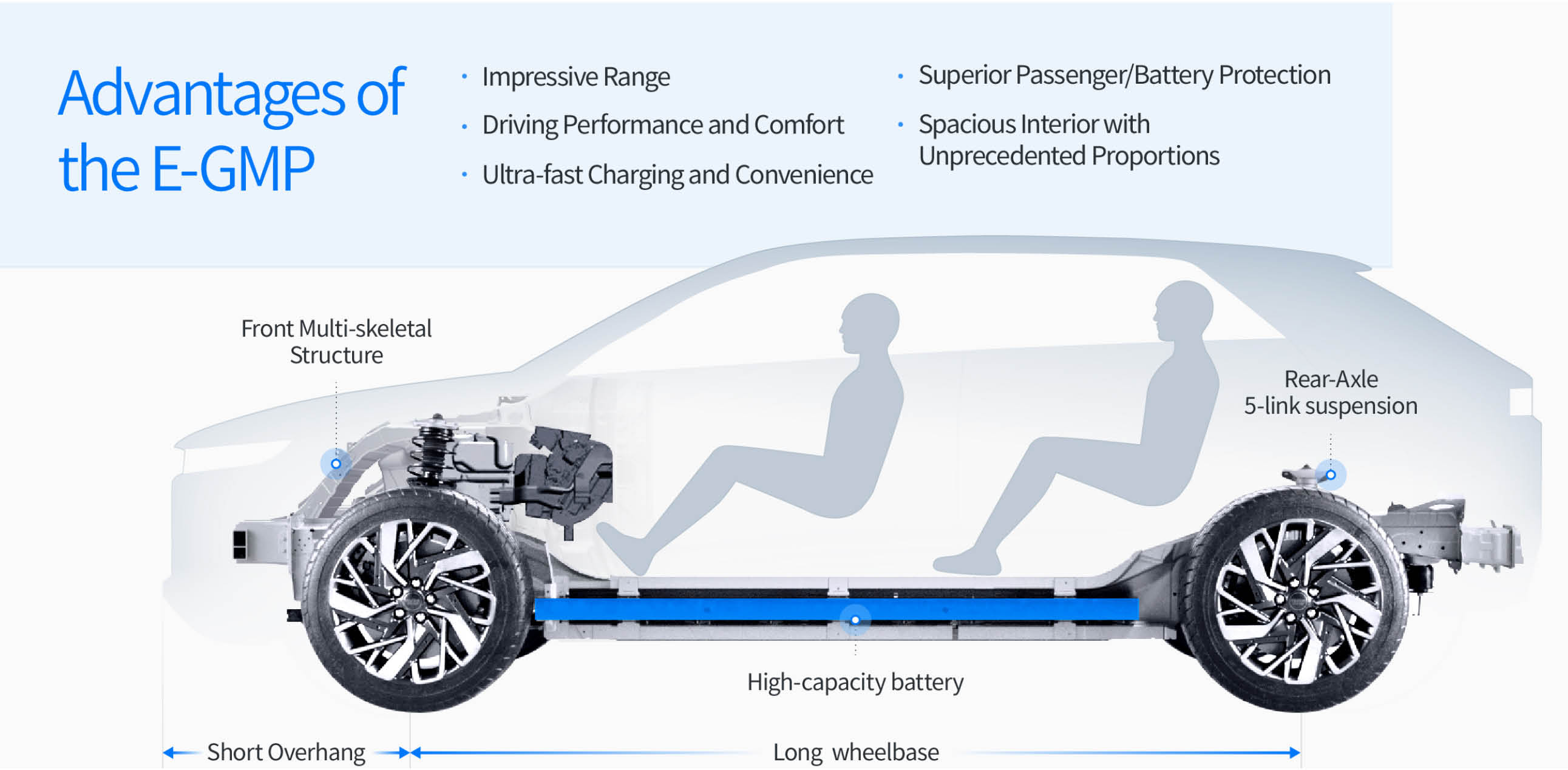
The E-GMP brings a variety of advantages, most of which had notably been beyond the reach of BEVs based on ICEV platforms.
The E-GMP brings a variety of advantages, most of which had notably been beyond the reach of BEVs based on ICEV platforms. The biggest of them is the long driving range(over 500km) provided by the large-capacity standardized battery placed low and center of the car body.
Ordinarily, BEV batteries are composed of battery cells, the most fundamental building block, and modules, which together form packs that make up the battery. The E-GMP has standardized the battery cell and module, which allows for variations in battery capacity to match the vehicle’s segment and preferences of target consumers. It also helps that the standardized battery module has reduced the number of parts to become more compact; the battery system as a whole has become flatter and lighter, leading to a 10% improvement in energy density.
And then comes the battery’s placement—because the battery, composed as above, is placed low in the center of the platform, BEVs based on the E-GMP come with a lowered center of gravity that improves not only cornering performance but also stability during high speeds. The 5-link rear suspension system, tailored to the E-GMP, further optimizes these driving performance improvements. This suspension comes with 5-links connecting the car body to the wheels, each of which works to absorb the vertical and lateral shock from driving. The 5-link suspension is typically installed on the rear axles of large sedans to improve maneuverability, and it does the same job well for the E-GMP. And finally, completing the platform’s performance is the Integrated Drive Axle (IDA), the first mass-produced drive axle ever to change the structure whereby the power from the motor is delivered to the wheels.
Thanks to this BEV-optimized structure, safety performance has seen a drastic improvement as well. E-GMP’s safety-oriented technologies can be divided into two classes: passenger safety and battery protection. To ensure both, Hyundai Motor Group secured the space for shock absorption, installed ultra-high tensile steel, and tweaked the platform for effective load distribution.
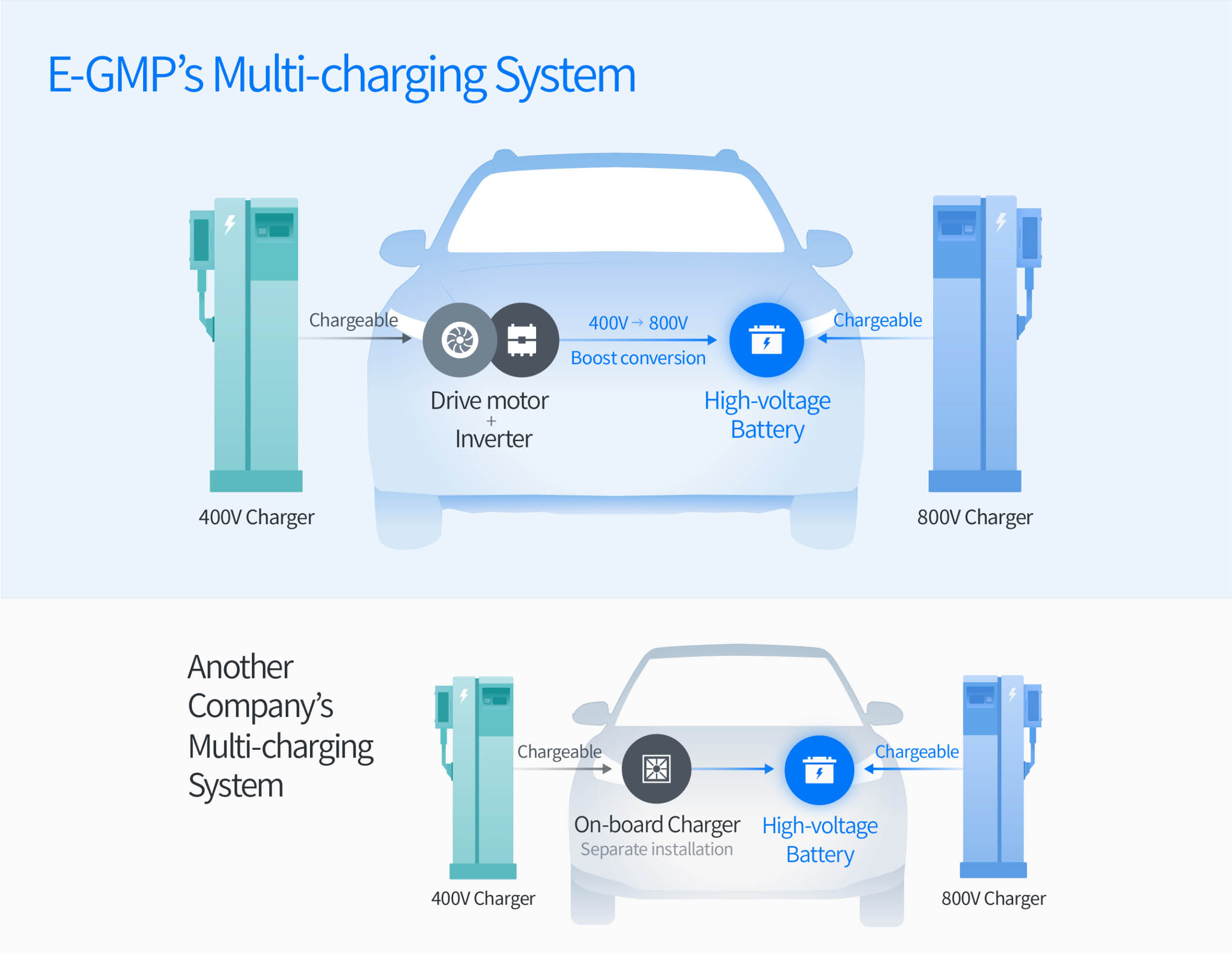
Moreover, the E-GMP employs the innovative Power Electric (PE) system that improves the charging experience. BEVs based on the E-GMP support the 800V high-speed charging, which is capable of charging an empty battery to 80% within 18 minutes. Under this scheme, even a short 5-minute charge can let the vehicle run for 100 km. This is a radical improvement over the mainstream 400V charging method, which takes anywhere from 30 minutes to 1 hour to charge a battery to 80%. The PE System supports both 800V high-speed charging and 400V fast-charging, making the E-GMP the first platform in the world to support such a multi-charging system.
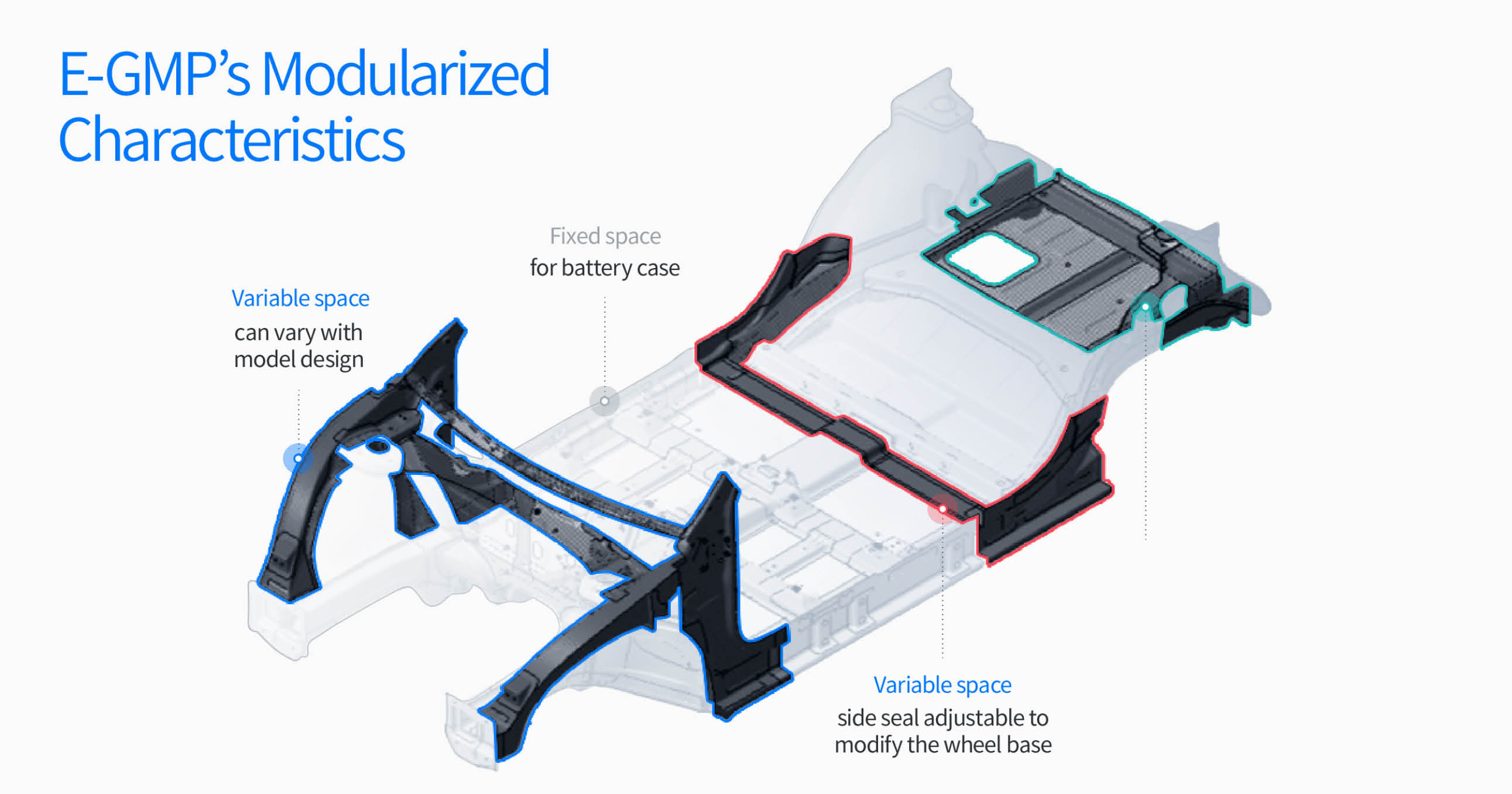
Thanks to modularization, the E-GMP serves as a foundation for accelerated BEV development, for various types of vehicle.
The E-GMP also has many advantages for vehicle development and production. The parts that make up the platform are mostly modules, which allow for flexible interchanging of parts to suit the vehicle in development. Modularization has become fairly common in new platforms for ICEVs, so this is not a new concept. But E-GMP’s meticulous modularization takes such flexibility to a new level. The areas that have a direct impact on performance, such as the space for frontal shock absorption, front/rear suspensions, and the battery casing, are fixed firmly; other areas such as side sill, rear member, and wheel/tire spaces are set as variable spaces that can be tailored to vehicle characteristics. The presence of many such variable spaces is what sets the E-GMP apart from more rigid ICEV platforms of today.
Thanks to modularization, the E-GMP serves as a foundation for accelerated BEV development, for diverse shape and size of vehicle. The platform need not be completely redesigned each time to match the vehicle; simply tailoring the variable spaces is enough to set the development in motion. This efficiency in development can significantly cut costs, the savings from which are of course relayed to consumers who will be offered a variety of BEVs at very competitive prices.
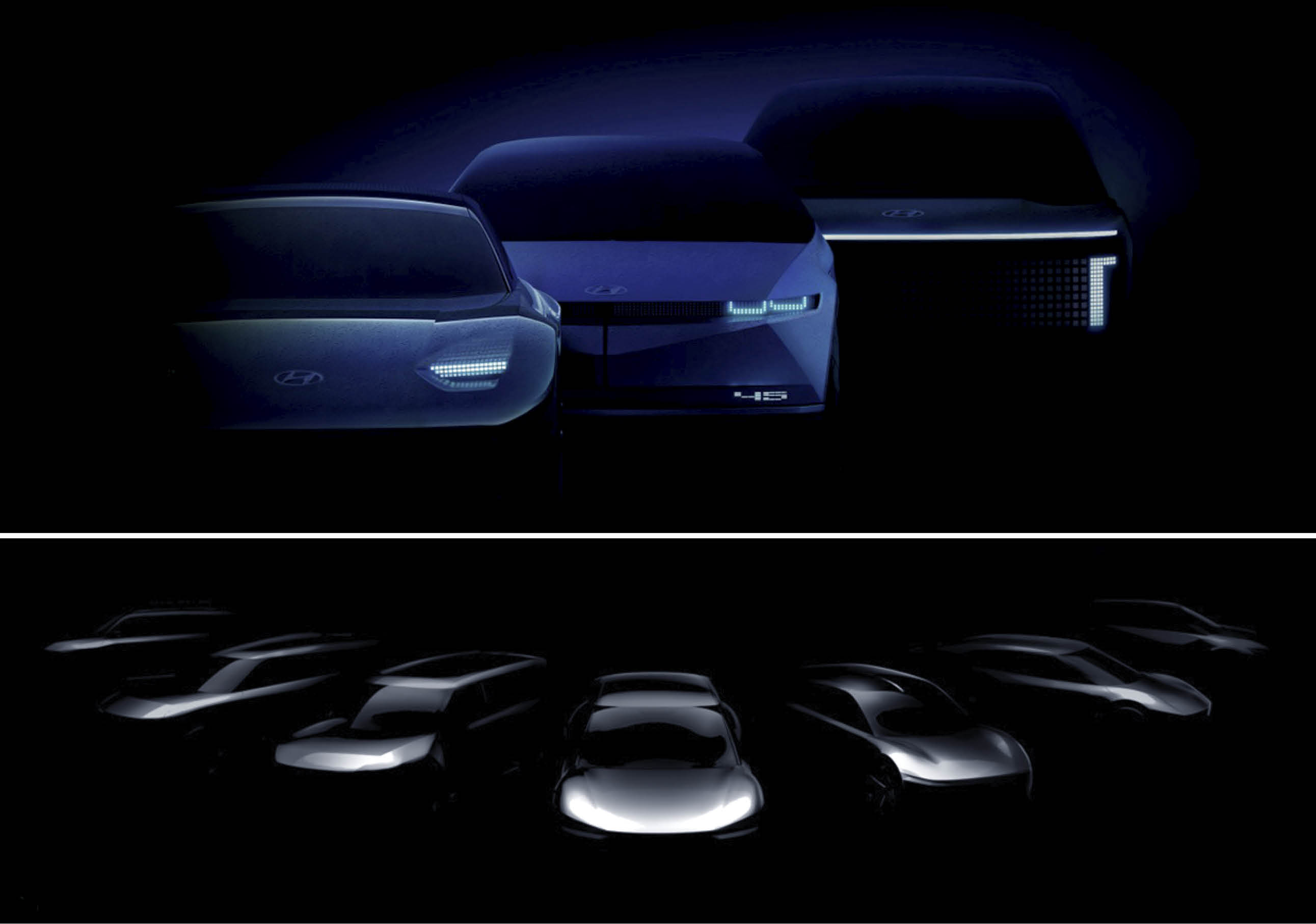
As shown, the E-GMP brings an optimal structure and design that can maximize the potential of BEVs. While providing the performance, safety, efficiency, and convenience that ICEVs cannot match, E-GMP brings innovative modularization to the production process and enables efficient, low-cost production as well.
The platform should serve Hyundai Motor Group’s plans for BEV development and roll-out well. The E-GMP will underpin Hyundai Motor Group’s plans to introduce a total of 23 BEV models including 11 dedicated BEV models, and sell more than 1 million BEVs worldwide by 2025.
As part of its BEV vision, Hyundai Motor Company launched its dedicated ‘IONIQ’ BEV brand in August 2020, which includes three dedicated BEV models, the IONIQ 5,6 and 7 by 2024. This currently covers various vehicle segments. In addition, Kia announced plans to increase the share of BEV sales volumes as a proportion of total sales to 20 percent by 2025. The company also recently published an early image of seven dedicated BEV models to be released sequentially by 2027.
This new BEV era envisioned by the group—where electric propulsion is mainstream—has now taken another important step. A vehicle starts with a platform, after all.
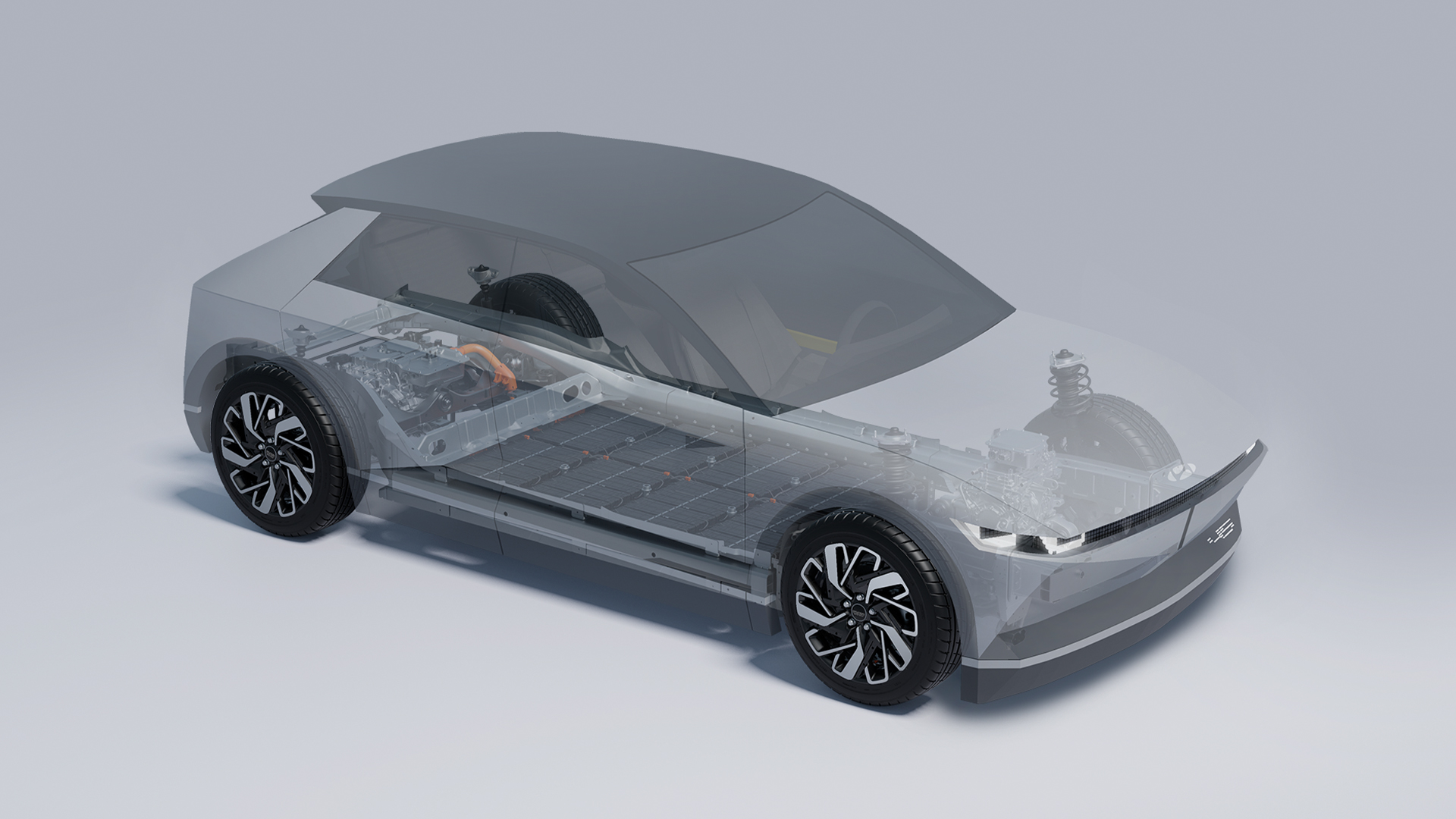
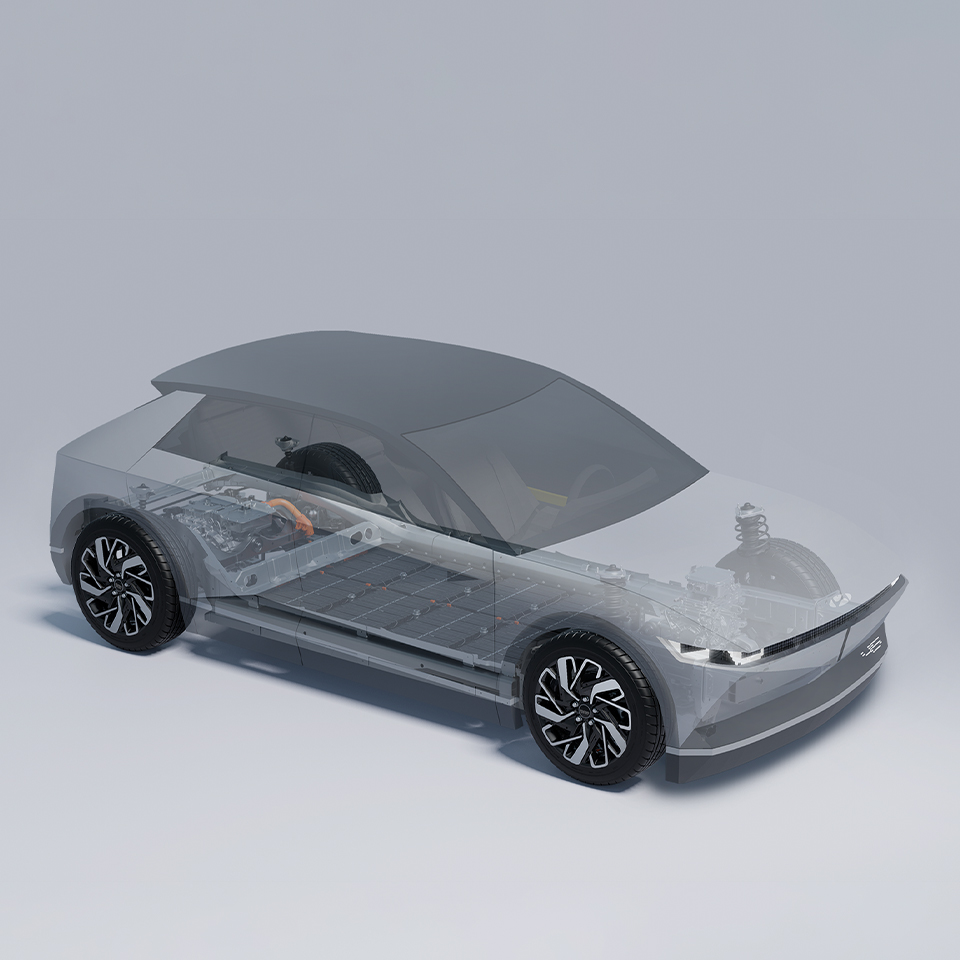
Realizing New EV Lifestyles: 5 Advantages of the E‒GMP
2020.12.02 10min read